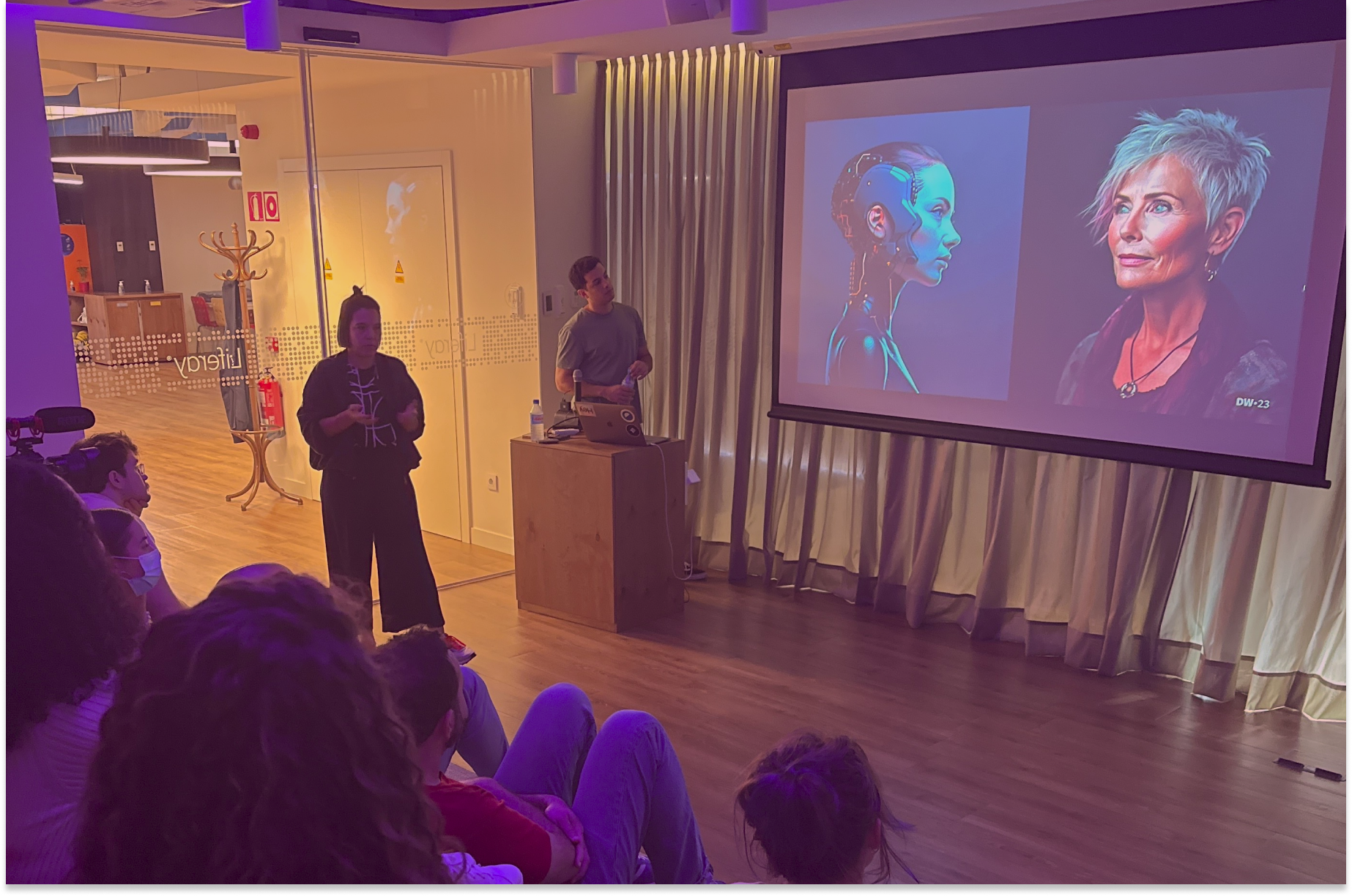Designing the Future. A Time for Inspiration by Antonio Jimeno and Carolina Rodriguez on July 31, 2023
3 Min Read

Liferay Design Week is a 5-day event where all designers of the company meet to share knowledge, build relationships and have fun together. This time, Madrid office has been the base that brought designers from every corner of the world. We had the chance to create a nice space for collaboration, innovation and far removed from the remote work setting.
Among the many inspiring moments we enjoyed, we (Antonio Jimeno and Carolina Rodriguez) had the pleasure to lead one agenda slot with our talk “Designing the future. A guide for inspiration”. We talked about how to envision the future, take actions to bring those visions to life, and empower the team to use their expertise for positive impact within the company and beyond.
In this synthesis, we present the essence of our talk, the importance of futures design to craft products and services that create positive change. We want you to be aware of the transformative power of design and its ability to create scenarios where innovation and empathy converge, fostering a world of equal opportunities and shared prosperity.
Foresight as a concept
We started our talk exploring the significance of foresight and its application in design. Foresight is an art and a science that empowers us to understand the possibilities of the future in order to influence its course.
As product designers working in the tech industry, we have a unique role in shaping the future through innovation and user-centric design. By pushing for deep prospective studies, we will help our companies to better:
- Prepare, adapt to change, and thrive in the face of uncertainty.
- Anticipate emerging technologies, customer needs, and market dynamics.
- Identify potential risks and opportunities.
- Make informed strategic decisions to allocate resources effectively.
Moreover, foresight can help organizations to avoid the trap of becoming obsolete. We navigate an increasingly volatile, uncertain, complex, and ambiguous world (VUCA). The rapid pace of technological advancements means that companies can quickly disappear if they fail to embrace change and anticipate shifts in their industries.
This said, having a more holistic perspective, enables organizations to understand the broader context of change and respond accordingly.
Related to change and how we deal with it, it is interesting to mention a concept from the spanish strategic designer Cesar Astudillo that describes this greatly - Untechnologizing change theories-. This means recognizing that change is not only driven by technology. Every time we think about designing the future, we tend to think about new products, a new car, a new artifact, something tangible. But understanding change and why things change (social, economic, and cultural signals) is the first and most important step to start envisioning the future. We could just consider technology a factor or even tool.
Foresight for Humanistic Purposes
Previous foresight description looked very “productivity based” as it is often associated with business strategies, but it can also be a powerful tool for more humanistic purposes. By analyzing future possibilities, we can anticipate systemic changes or identify potential social challenges. For example, foresight can help us envision and design inclusive technologies that empower marginalized communities and bridge digital divides. It enables us to challenge existing power structures and influence for more desirable futures.
Even, foresight can be a powerful tool for personal and professional growth. It allow us to shape a future that aligns with our aspirations and contributes positively to the world around us.
Desirable for whom?
We already talked about envisioning more “desirable futures”. However, the concept of desirable is inherently subjective. What may be desirable for one group or individual may not be for another. This raises questions about power and inequality in the design process. As designers, we must be aware of the diverse needs and perspectives of our future users, including those who are currently marginalized or underrepresented. By actively engaging with diverse stakeholders and co-creating future scenarios, we can work towards designing futures that promote inclusivity and social justice.
Overton window is a concept that describes the range of ideas that are deemed acceptable in a society and plays a crucial role in shaping future products and services. Jim Dator's quote, Any useful idea about the future should appear to be ridiculous emphasizes the importance of pushing the boundaries of imagination and challenging the status quo. By envisioning radical and transformative futures, we can expand the Overton window and redefine what is considered acceptable in society, ultimately shaping a more progressive and inclusive future.
The Responsibility of Design to Generate Impact
As product designers, we have the power and responsibility to draft the future through our creations. The impact we produce goes beyond the immediate usability and functionality of our products, it extends to the broader societal and environmental implications. That is why we must consider the long-term consequences of our designs and actively strive for sustainable and ethical solutions or fixes.
By considering potential future scenarios, user needs, and emerging technologies, we can create products that are not only innovative but also resilient to future changes. This approach involves adopting a mindset of continuous learning and adaptation, where the design process becomes a journey of exploration and discovery.
As Janes McGonigall points If the present could be different because of the choices we made, then the future can still be different because of the choices that we make. And that gives us hope.
The choices we make as designers today shape the possibilities of tomorrow. Let’s practice futures design! 🚀